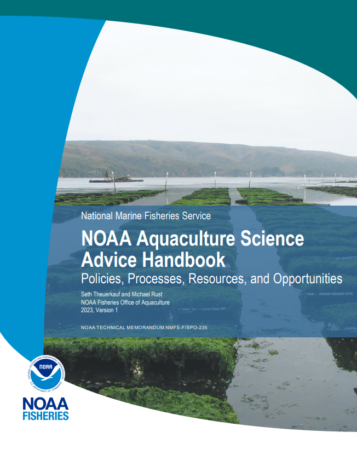
News & Views
Regulations
NOAA publishes new aquaculture handbook
June 21, 2023 By Hatchery International staff

(Photo: NOAA)
National Oceanic and Atmospheric Administration (NOAA) has developed a new handbook outlining scientific advice for aquaculture management in the United States.
The Aquaculture Science Advice Handbook: Policies, Processes, Resources, and Opportunities assesses aquaculture management policies, resources, and processes to provide a guide for developing science products.
“It’s providing information to regulators at the state level, federal level and sometimes the local level,” says Dr. Ken Riley, chief of NOAA’s science branch. “Aquaculture itself can be regulated and managed in many different ways at those different levels, and we want to communicate how our scientists are using their expertise in helping inform policy and management and regulation of aquaculture.”
Aquaculture permitting is under the auspices of several different federal and state agencies. While Riley notes that NOAA itself is not directly involved, the shared knowledge of its multi-disciplinary team of scientists and engineers is often used as part of that decision-making process.
National-level guidance of this type has not previously existed. The 54-page handbook provides best practices and successful models for aquaculture science advice development and describes laws and policies around aquaculture permitting as it relates to scientific advice.
It would be tempting, in the context of ongoing criticisms of open-net pen fish farming (which have been described as lacking a basis in science by many in the industry), to see the handbook as an attempt to address misinformation. However, that is not the purpose of the handbook.
“We’re not using this to dispel any myths, beliefs or misinformation about aquaculture,” says Riley. “We’re just stating that when we publish our science, it’s based on the best available information that we have at the current time.”
This story was originally published in Aquaculture North America.
Print this page
Advertisement
- Sylvamo, Cirkular announce partnership on ‘Tree-To-Feed’ project
- California salmon season in jeopardy





